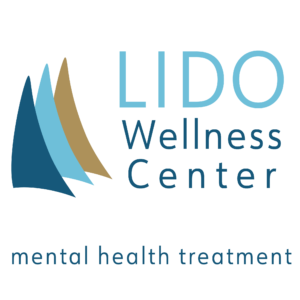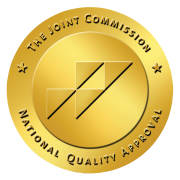Trauma Bonding: Definition, Stages, & Recovery
Trauma bonding might be a term that might sound like jargon straight out of a psychologist’s textbook. But the reality is far more common than our understanding might suggest. For anyone who has experienced it, it’s crucial to unpack what this means, how it develops, and how one can gently untangle from its grasp.
What Is Trauma Bonding?
Firstly, trauma bonding forms between people where one person consistently undermines the other, yet an emotional connection deepens.
Imagine a couple where one partner frequently exhibits jealous and controlling behaviors, regularly questioning the other’s whereabouts, decisions, and interactions with friends. This partner often accuses the other of being unfaithful or disloyal, leading to arguments that can escalate into emotional abuse or threats of breaking up.
Then comes the gesture …
However, following these intense and upsetting episodes, the controlling partner becomes exceedingly affectionate and remorseful. They might offer grand romantic gestures, such as surprise vacations or expensive gifts, and make emotional declarations of love and commitment. They promise to change, using these moments to rekindle the romance and deepen the emotional connection.
And the bond between the two becomes even stronger than before.
This paradox isn’t just perplexing—it’s painful. It’s like superglue; it holds fast and tight, even when everything screams that it shouldn’t.
How Does Trauma Bonding Develop?
It’s not merely about shared experiences but the intensity and rollercoaster nature of these experiences. Imagine a relationship as a series of exchanges—moments filled with both profound joy and deep sorrow.
This isn’t just about being together during good times and bad. It’s about how these polarized moments are woven into the fabric of the relationship, creating an erratic but compelling rhythm that becomes almost addictive.
It’s addictive …
Think about it like a suspenseful novel. In the narrative of such relationships, every positive incident—every moment of kindness or affection—serves as a plot twist that keeps the story moving forward, making the characters hope for a happy resolution. These are the hooks, the cliffhangers.
These dynamics set the stage for the trauma bond to solidify, where the intermittent rewards amidst the strife fortify the emotional connection, masking the underlying dysfunction.
Recognizing the Stages of Trauma Bonding
To understand trauma bonding, let’s look at the stages.
Stage one
In the first act, everything is as perfect as a scene in a movie—bright, engaging, and full of promise. Here the abuser behaves as their most appealing self, making the potential for danger seem distant and improbable.
Stage two
As we transition into the second act, the tension builds subtly. So subtle you might not even notice. This is where small, unsettling feelings start to emerge. Something feels off, but it’s hard to pinpoint what exactly, or why one should be alarmed. Words that catch you off-guard or seem insensitive. During conversations, they start making offhand comments that seem just a bit off—perhaps poking fun at your career choices or lifestyle in a way that’s not entirely playful, or casually dismissing your feelings about something important to you.
Stage three
Then, we reach the third act—where the actual harm occurs. This phase can be overt, like emotional or physical abuse, or more insidious, like gaslighting or psychological manipulation. The impact is profound and disorienting, shaking the foundation of the victim’s self-esteem and reality.
They may verbally lash out, blaming you for their unhappiness and failures, and even isolating them from friends and family. These accusations and emotional withdrawals create a tense and unstable home environment.
Stage four
The final act is reconciliation, which cleverly resets the stage each time. It’s sprinkled with promises, apologies, or acts of affection. The victim of a trauma bond finds that the reconciliatory gestures momentarily ease the pain. And it’s enough to compel them to stay in the cycle, hoping each reset leads to a better chapter.
Breaking the Trauma Bond
So, how do you break free? Awareness is the first step. Recognizing the pattern provides the power to seek change. Secondly, external support is invaluable. Friends, family, and especially professionals can offer perspectives and support outside the emotional whirlwind.
Moreover, therapeutic intervention often provides the tools and space to explore these bonds safely and understand the underlying issues contributing to staying in harmful relationships.
Navigating the Path
Recovery from trauma bonding isn’t a sprint; it’s more like a marathon. And while the path can sometimes feel lonely or daunting, it’s rich with the promise of reclaiming one’s peace and autonomy.
Get Help With Lido Wellness Center in Newport Beach
If you or someone you know is navigating the complex dynamics of trauma bonding, remember, help is not just available—it’s a vital step towards healing. At Lido Wellness Center in Newport Beach, CA, our dedicated team specializes in understanding and unraveling the intricate patterns of trauma bonds.
We provide compassionate support and effective strategies designed to empower you towards a life of autonomy and healthier relationships. Don’t wait to take the first step towards your new chapter. Contact us today and begin your journey to recovery and self-discovery.


 There has been substantial growth in the use of social media in recent years. The Pew Research Center found that 72% of Americans in the U.S. use social media. However, since social media use is still relatively new, there aren’t any long-term studies recording the effects of social media.
There has been substantial growth in the use of social media in recent years. The Pew Research Center found that 72% of Americans in the U.S. use social media. However, since social media use is still relatively new, there aren’t any long-term studies recording the effects of social media.  Signs That Social Media Is Affecting Your Mental Health
Signs That Social Media Is Affecting Your Mental Health

